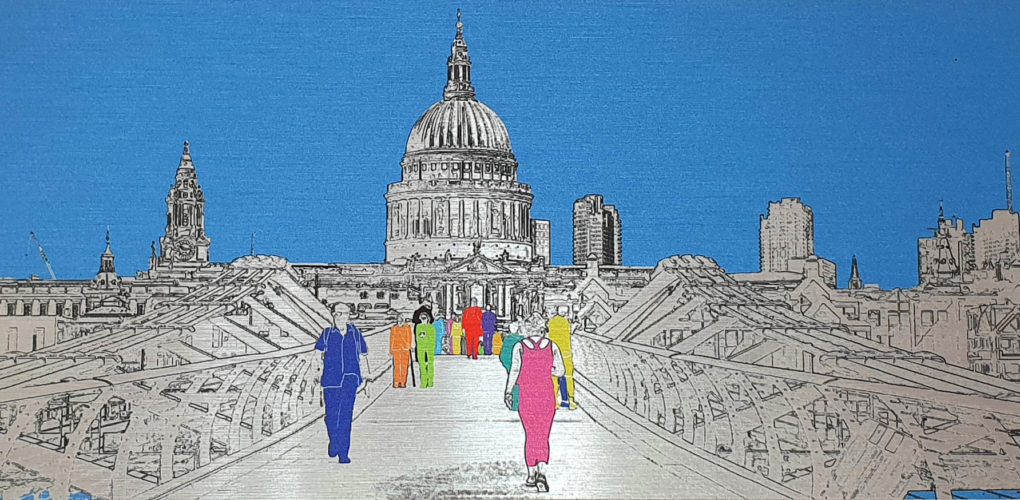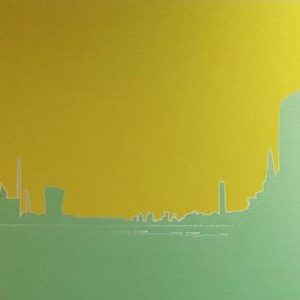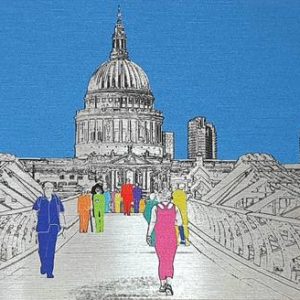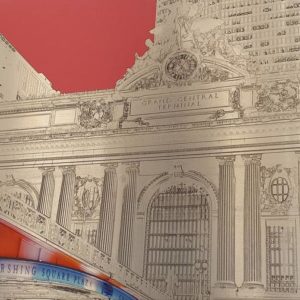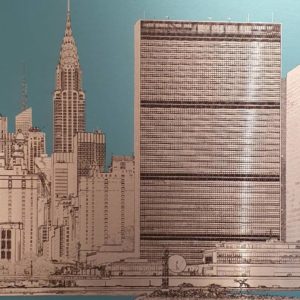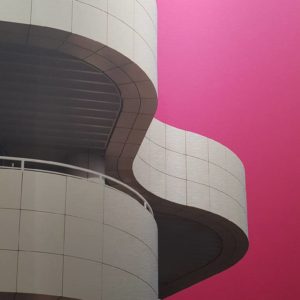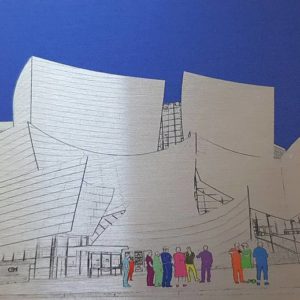Inside the Studio
Inside the Studio with Michael Wallner
As colourful as his vibrant artworks, London-based artist Michael Wallner is rarely seen without his warm, friendly smile onsite at The Other Art Fair.
Michael’s twenty years experience in the Media industry, working on entertainment programmes, talk shows, documentaries, animations and a children’s novel, has proven a long love affair with visual images – but his true passion lies in creating innovative and original art, using a range of mixed media including brushed aluminium, neon, reclaimed wood, and laser-cut acrylic.
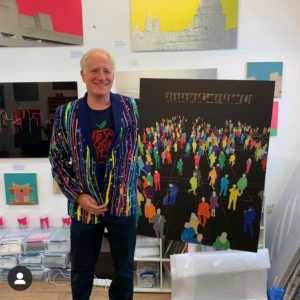
How did you first get interested in your medium, and what draws you to it specifically?
I have always been passionate about the visual arts ever since I was given my first camera when I was 7 years old. Before I became a full-time artist I was a television producer for many years, so images have always been a big part of my life.
I used to print my photographs on canvas and hang them in local restaurants and cafes. But this all changed when I moved into my studio at Wimbledon Art Studios in South London.
I learnt about the use of different materials from the other artists in my community and began to experiment with the digital manipulation of my images.
Now I print my art on brushed aluminium which gives the images an etched appearance and picks out the intricate details of a city’s architecture and skylines, another of my passions.
My latest collection celebrates the beauty of the city through the shapes, outlines and colours that define its character. London, New York, Los Angeles, Hong Kong, Paris, Singapore, Miami, and Dubai all feature in my portfolio.
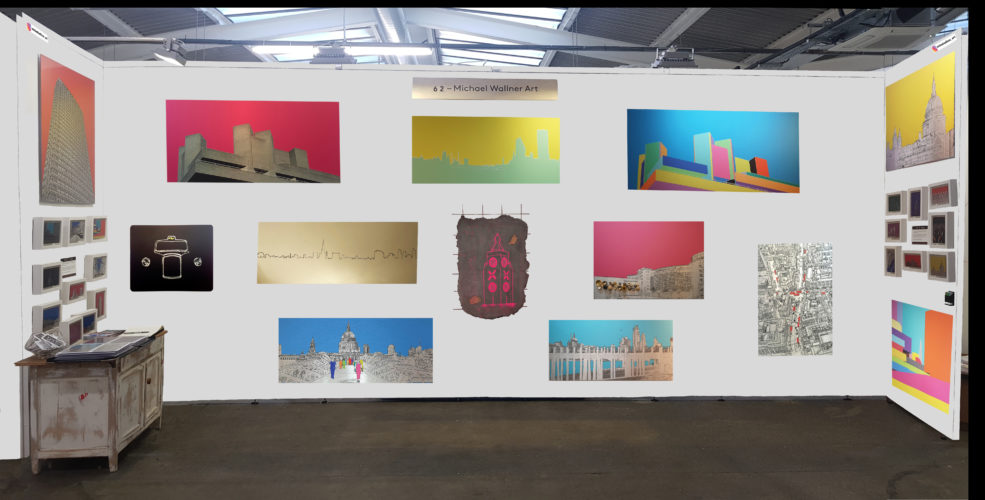
Can you walk us through your process? Do you begin with a sketch, or do you just jump in? How long do you spend on one work? How do you know when it is finished?
I almost always begin with my own photographs. I take thousands of them! Pretty much every day. I test out a few first, playing around with them digitally, to help me decide which images may work as pieces of art. Then I digitally colour them by hand with a Wacom graphics tablet. The process can be long and painstaking. Colouring the individual segments of Big Ben’s clock face, or every rush hour commuter at Liverpool Street station can take a long time. If I am going to print these images up to 2 metres long, it has to be perfect – I can’t miss a single millimetre.

For my most technically complex pieces – like my most recent concrete work, my magnetic piece, or my light installations (neon, moving L.E.Ds) I can often spend many months in planning meetings with my fabrication and technical teams. Finding new materials to work with and making them more and more ambitious is my favourite thing about being an artist.
If you couldn’t be an artist, then what would you be?
If I couldn’t be a professional table football player I would love to be a forensic detective. I love a career in which obsession with detail is a good thing.
Any advice for younger artists at the start of their careers?
Be brave. Be patient. Be prepared to fail. But above all get out there – a career as an artist is a long-term thing. Meet as many people in the business as you can, go to Private Views, get to know people gradually – every conversation you have could pay dividends in the future. Support other artists – we’re all in it together. Use every available option to get your work seen. Learn how to talk about your art in a way which everyone can understand. Put in the hours.
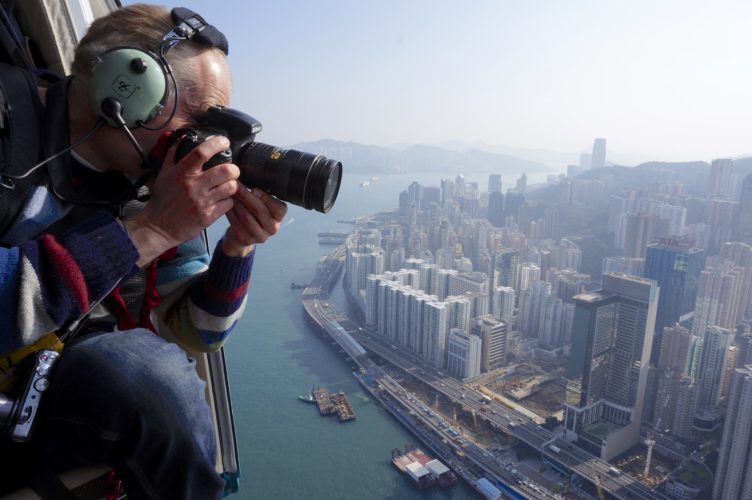
Tell us something about yourself that might surprise people to hear
I have pieces of titanium in my eye socket and around my heart valve. I am left-handed, but only for writing. I am right-handed and right footed for any sport.
